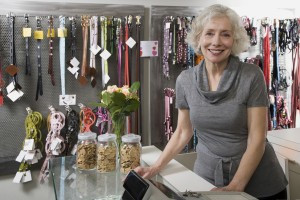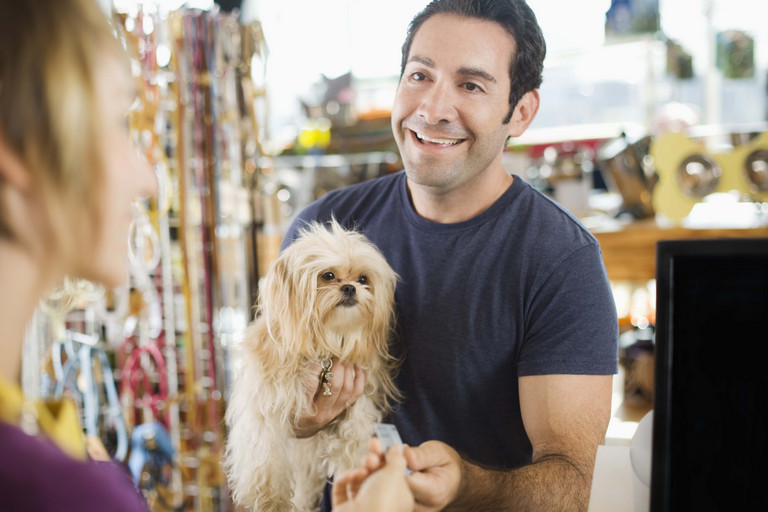Adapting to Your Customers
Pet Age Staff //December 1, 2015//
The pet industry is regularly bombarded with news headlines such as, “Nimble, Savvier, Regional Chains Entering Your Market,” and “Canadian Pet Stores Expanding all over the U.S.,” or “Big Box Pet Opening Small Format Stores.” These are constant reminders of how difficult it is for local, independent pet specialty stores to compete in this fragmented, competitive retail world.
The good news is that smaller specialty stores can deliver something many of their competitors cannot—customized products and services based on the personal needs and preferences of the core shoppers you’ve come to know and love. These include product solutions for harried shoppers; fun, rewarding in-store shopping experiences; and knowledgeable staff to engage pet lovers and keep them coming back to find products that will surprise them and delight the pets they adore.
Think Seasonally
The largest percentage of pet owning households are families with kids, and there’s a very specific calendar of events that dominate those families’ lives. In the fall, it’s back to school, Halloween and Thanksgiving. In the winter, there’s Christmas, Hanukkah and Kwanzaa, followed by a long cold and flu season and Valentine’s Day. Spring means Easter, Mother’s Day and graduation ceremonies. Summer brings with it Independence Day and the long-awaited outdoor season. All of these events present significant opportunities to bridge family and pet activities that drive sales. Even single pet owners are tuned in to this cycle. You can leverage both their nostalgia from when they were kids and their desire to include their pets in the fun to drive store sales.
Start by setting aside an area of the store for themed holiday events. Back to school, for example, can include special healthy treats, toys and puzzle games to occupy pets now home alone more often. Fall has always been a time to buy new clothes and shoes for growing children. Why not for pets, too? Showcase dog slickers and booties for the tougher weather, and new reflective leads and collars for safe nighttime walks, which are becoming increasingly common.
Think similarly about other seasonal shifts and holidays as the calendar moves through the year. Pet owners want to care for and indulge their dogs and cats with the rest of the family and if you present them with fun, useful ideas, your sales will expand from mostly quick pet food one-off purchases to include higher margin items, too.
Fun Finds for Persnickety Pets
Many pet owners love to spoil their pets with new toys, accessories and treats, but they often don’t have the time to identify new products or aren’t sure what their picky pets will enjoy. Help them out by creating a section close to the checkout area to creatively display new products and ‘fun finds’ that shoppers might want to try. Be sure to include items in a range of prices, from a few dollars to more expensive items, so there’s something for everyone. Ensure staff are engaged and ready to explain why these picks are being featured.
Integrated Product Displays
How often do you see food- or treat-only displays? Food is by far the most often purchased category, but many of your shoppers are already coming in to buy a favorite food. With this in mind, why not use your displays for their true purpose—to promote impulse buys of non-staple products? Brainstorm about your customers’ key activities.
For example, if your store is located near a variety of walking/hiking trails, provide an assortment of gear and treats to make the trip fun. If your customers are interested in health and wellness, be sure to create eye-catching displays with the latest food, treat and supplement items, complete with nutrition information. For a dog walking display, you can feature on-the-go treats, water bowls, collars and non-pull leads. Sport or high activity dog foods and treats can also be showcased for highly active dogs. Test out a few different integrated theme displays and determine which ones are most effective to keep for future rotations.
Health and Wellness
Health and wellness concerns are gaining ground with all consumer segments, including pet owners. Providing a year-round health and wellness display with rotating product categories is a great way to keep shoppers engaged. A specific month could feature the best cat and dog supplements, and another could educate shoppers about new wet food additives on the market. Other themes might be healthy skin and coat products, oral health or grain-free food options.
Another great way to boost sales is to include staff recommendations or ratings similar to those you find in independent wine stores. Have cards that you can affix to display shelves with the staff member’s name and why he or she likes and recommends a product.
 Personalized associate endorsements work well with more complicated product categories, such as aquarium equipment or bird toys. This is especially when shoppers might be struggling to decide which new products are best for their pets.
Personalized associate endorsements work well with more complicated product categories, such as aquarium equipment or bird toys. This is especially when shoppers might be struggling to decide which new products are best for their pets.
Boosting Sales
One way to boost sales is to take a page out of the big retailers’ playbook. Organize a BOGO, or a buy one, get one, month twice a year. Enlist the support of your suppliers and distributors so you can have a wide selection across the store. If margins are too tight for a ‘free’ item, offer the second item at 50 percent off. Pair dry food with wet food or treats and mix up accessories to engage and encourage shoppers to try items they wouldn’t necessarily purchase during their standard food buy.
From the opposite side of the spectrum, take advantage of what makes a small pet retailer so powerful when competing against a big box player: you can know and have a personal relationship with your customers and their pets in ways they can’t match. Gather profiles on customers, their pets and their buying habits. What type of food do they buy and how often? Use this data to set up text or email reminders for your customers when their food supplies are running low or let them know about an in-store event that is appropriate for their pet.
Launch a pet club with on-going promotions, discounts on product and a platform for owners to meet each other. Send pet birthday cards with a free in-store treat to encourage shoppers to bring their pets into the store. Organize food drives for local pet shelters; pet owners love to support pet related causes, especially when they are local. These are just a few of the great ways you can solidify your relationships with your customers to secure long-term loyalty.
There are many effective merchandising, display and general marketing strategies that work to encourage shoppers to come into your stores and buy products that they might not have considered before their visit. Think about what’s going on in a pet owner’s broader world and leverage those factors in your stores. Your shoppers, their pets and your cash registers will all approve.




















